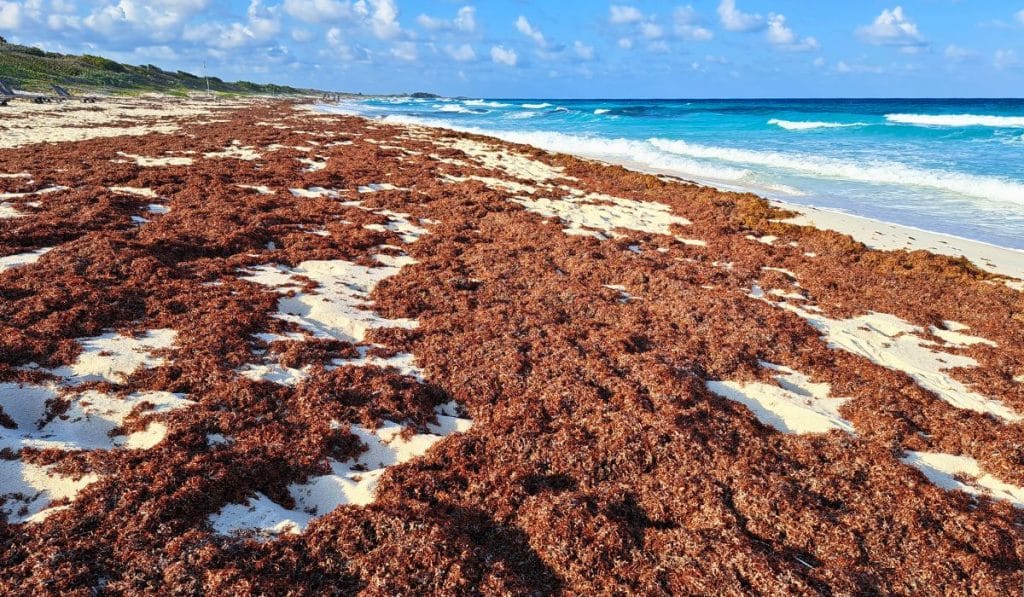The latest Mexican Navy Secretariat bulletin issued on May 11 raises the sargassum alert for the northern area of Quintana Roo to ”Level 3 – Yellow,” due to the massive arrival of the algae in recent days and a negative forecast for the days to come.
Meanwhile, Quintana Roo Sargassum Monitoring Network (RDMS) reported the detection of 7,400 tons of sargassum (5,000 square kilometers) floating in the sea, 100 km east of the Guanaja and Roatan Islands, heading to the state’s beaches from the Honduran Caribbean.


Trajectories and speeds calculated by simulation models show that much of that sargassum will wash ashore on the northern beaches of Quintana Roo in a few weeks.
“The main geostrophic marine currents and dominant winds, which run from east to west, will drag this sargassum in the coming weeks towards the waters of the Mexican Caribbean,” said RDMS.
“This huge accumulation of macroalgae will periodically arrive at our beaches, sometimes with arrivals of great intensity, especially in the southern zone of the state, in about two weeks,” they added.
Beachgoers are urged to observe the “alert color” and consider safety conditions for beach activities such as swimming when sargassum is present in the waters and onshore.
Solidaridad, where the resort city of Playa del Carmen is located, has been greatly affected by the macroalgae, especially in its central area. The Federal Maritime-Terrestrial Zone Directorate carries out daily beach cleaning in an attempt to solve the problem.
But the Mexican Caribbean is not the only tropical destination affected. Neighboring countries like Jamaica, the Dominican Republic, as well as the south of Florida are fighting their own battles against sargassum.
Similar to Mexico, the Dominican Republic is also installing anti-sargassum barriers in the open sea to prevent the algae from arriving at its otherwise pristine beaches.
For its part, the Riviera Maya Hotel Association (AHRM) continues developing strategies to get rid of sargassum in the most productive way possible.
According to the entity, hoteliers look to transform the seaweed into a sustainable commercial product while reducing the monetary burden of cleaning beaches every day, informed REPORTUR.mx.
According to experts, the over-reproduction of sargassum can adversely impact coastal ecosystems, tourism and public health when it arrives at beaches without control. This phenomenon is known as an inundation event.
Data collected by authorities signal that around 300,000 tons of sargassum will arrive on Mexican beaches in 2024, breaking the records set in the last couple of years.
Keep yourself posted about the sargassum situation by joining our FB group Mexico Sargassum Seaweed Updates (Cancun, PDC, Tulum, etc.)


